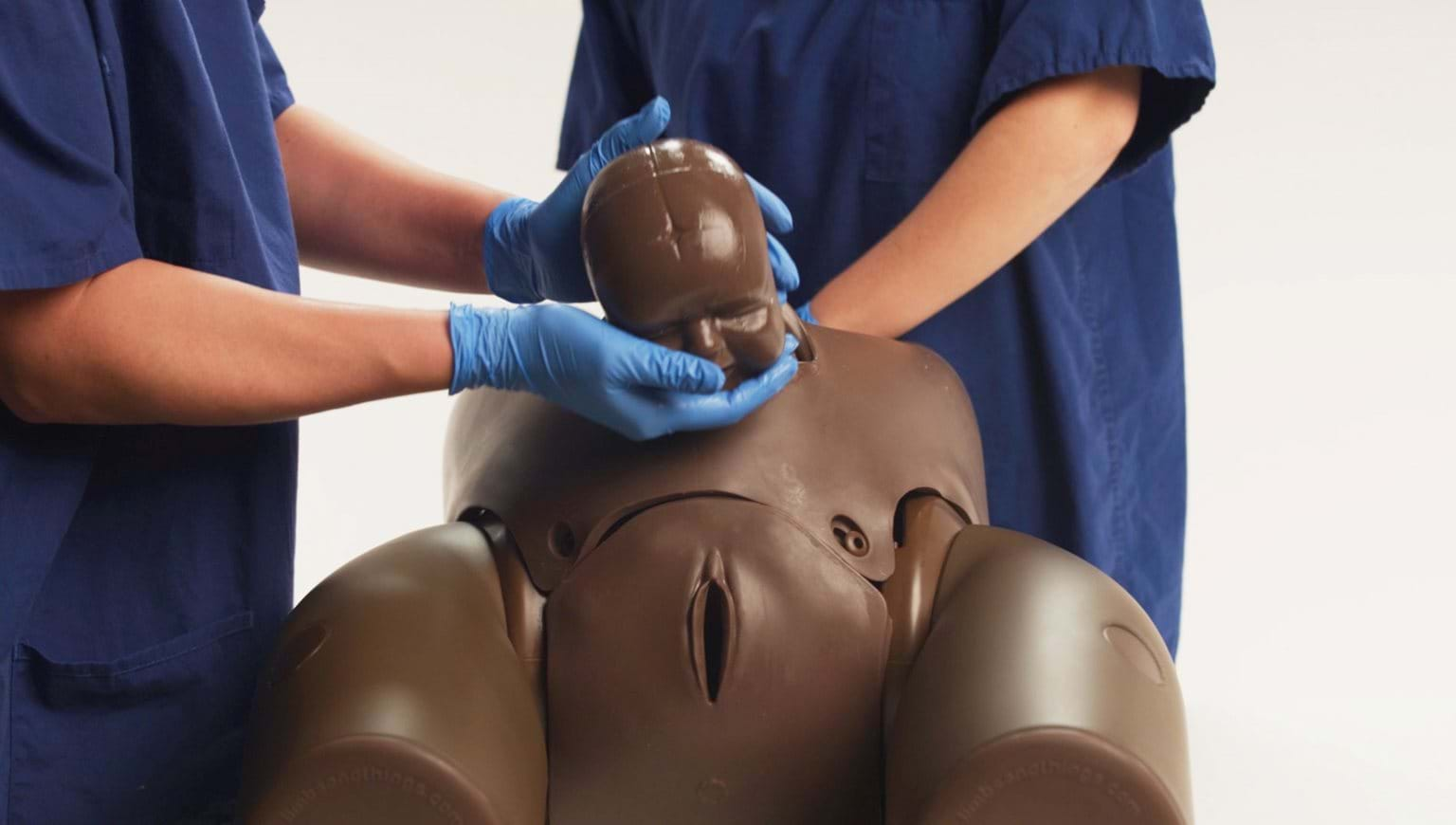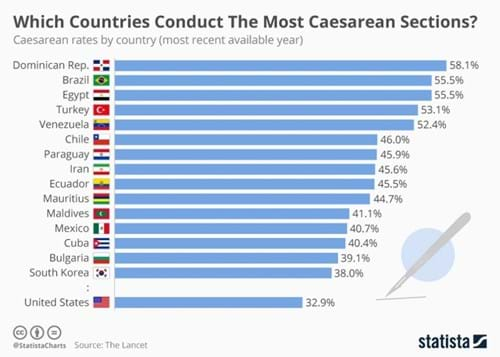News
International Perspectives on Cesarean Birth
10 April 2023

The increase of Cesarean Section (aka C-Section or CS) rates has been a focus of governments and healthcare providers around the world over the past decade. While there are certainly situations when a mother and/or baby benefit from a C-Section for the best outcomes, there are a growing number of elective procedures being performed around the world. The following graph shows which countries conduct the most Cesarean Sections:

In the UK, the NHS has revealed that “35% of births between April 2021 and March this year were through a caesarean. This is up from a quarter 10 years ago”.4 However, even within the UK, C-Section rates vary widely depending on which hospital you deliver in. The following graph shows rates by NHS trust facility:

“Caesarean sections can be a lifesaving and necessary procedure. Nonetheless, caesarean delivery continues to result in increased maternal mortality, maternal and infant morbidity, and increased complications for subsequent deliveries. This raises concerns over the growing rates of caesarean sections performed across OECD countries since 2000, in particular among women at low risk of a complicated birth who have their first baby by caesarean section for non-medical reasons.
The World Health Organization concludes that caesarean sections are effective in saving maternal and infant lives, but that caesarean section rates higher than 10% are not associated with reductions in maternal and newborn mortality rates at the population level. Nevertheless, caesarean sections should be provided based on need, rather than striving to achieve a specific rate.”1
One growing trend around the world is known as cesarean delivery on maternal request. It is now “estimated that 2.5% of all births in the United States” are by maternal request.2 The American College of Obstetricians and Gynecologists, as well as other professional organisations around the world agree that, considering the risks and benefits of both vaginal and cesarean delivery, “In the absence of maternal or fetal indications for cesarean delivery, a plan for vaginal delivery is safe and appropriate and should be recommended.”2
If a planned or unplanned C-Section does occur, there is often a feeling that maternal bonding or early breastfeeding may be compromised. To decrease these concerns, some countries have created policies around the concepts of “gentle” or “extended” C-Section.3
“When compared to the ‘traditional’ CS, the gentle CS is a delivery process that promotes the involvement of the patient and family during the surgical procedure. It imitates certain aspects of vaginal delivery by allowing the mother, e.g., to have early intraoperative skin-to-skin interaction with the baby”3, with a goal of increased duration of breastfeeding and maternal-child bonding.
In Switzerland, where the C-Section rate is over 30%, an extended gentle CS adds in the possibility of the parents “observing the delivery from the abdomen through a transparent drape. This technique allows to have an early visual contact with the baby.”3
The public perception that the C-Section procedure is nearly risk-free “overlooks the fact that a cesarean section is a surgical procedure with numerous potential complications for both mother and child… A primary section increases the incidence of uterine rupture, placenta previa or accreta, and even of ectopic pregnancy—all complications that can affect subsequent pregnancies”5
Today, more than ever, it is imperative that Obstetricians are prepared to perform Cesarean deliveries safely. The Limbs & Things PROMPT Flex Enhanced Caesarean Section Module allows the provider to gain the following skills
- Cephalic and breech delivery
- Application of fundal pressure
- C-section at full dilation
- Delivery of a transverse lie baby
- Instrument assisted C-section delivery
- Delivery of the placenta
- Teamwork and human factors training in emergency C-section
Delivery of a baby with an impacted head:
- Abdominal cephalic dis-impaction
- Vaginal dis-impaction methods (vaginal up push)
- Reverse breech extraction
- Patwardhan’s techniques
- Use of balloon dis-impacting device (fetal pillow)
The mode of delivery is a personal decision between a woman and her physician. At Limbs & Things, we encourage women globally to make the best-informed decision for her family. And, regardless of that decision, we stand ready to provide realistic products that support the training needed to build both competence and confidence in the healthcare team.
1 OECD Library: Caesarean Sections


